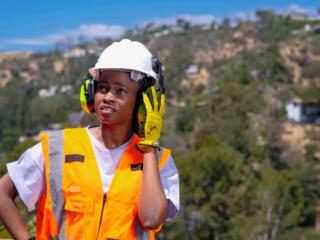
Protecting Workers In Noisy Environments
Protecting your workers in the workplace can come in many different forms. First, implement OSHA-compliant health and safety measures to ensure your team is working in safe conditions.
One such consideration to think about is the level of noise in your workplace. Occupational noise is a health threat for approximately 22 million people in the United States. In the working-age population with a history of occupational noise exposure, 33% have audiometric evidence of hearing damage caused by noise, and 16% have significant hearing impairment due to noise exposure.
Hearing damage can occur at noise levels of over 85 decibels. For example, normal conversation is around 60dB, and a motorbike engine is approximately 90dB to give you some idea of the level of noise required to cause damage for both the short and long term. Therefore, making sure you are aware of your sound levels is paramount. You can use tools such as a sound level meter to ascertain precisely the sound level in your working environment.
If you discover that you are near OSHA levels, here are some ways to protect workers.
Allow Breaks in the Day
If your workers are in an extremely noisy environment, allow frequent breaks so they can move away from the high sound levels. While they might be wearing hearing protection, allowing them the chance to rest their ears can support healthy hearing and ward off hearing damage.
Hearing Protection
Earplugs, earmuffs, ear defenders, etc., are essential when working in environments with high sound levels for prolonged periods. Make sure to check all equipment to ensure they meet the appropriate level of protection. Check regularly for any damage that can affect the effectiveness of the hearing protection too.
Invest in Low Volume Equipment
This, of course, isn’t always possible. However, you can invest in equipment that works at lower sound levels to reduce the overall noise in the working environment. In addition, new technology is under development all the time, so keeping abreast of the recent changes and products in your industry allows you to make the best choices for equipment and tools for your company.
Sound Proofing
Where possible, increase the distance between workers and noisy equipment by creating barriers closing off no-go areas or adding padding to the regions to absorb noise and reduce the level of sound emitted—used in conjunction with adequate hearing protection to provide support for your employees in more than one way.
Support Regular Hearing Checks
If your workplace has a loud environment, protecting your worker’s ear health in practical ways is sound business practice. One such way is to assist with regular hearing checks. Be it as a stipulation in your health insurance coverage or by providing a voucher to cover all or part of the cost of a routine hearing appointment.
Sadly not all damage can be prevented, and general day-to-day life can also damage hearing if precautions aren’t taken outside of the workplace. But by making sure you are following OSHA guidelines and providing the proper hearing protection equipment, you can reduce the risk of your workplace causing untoward damage.






